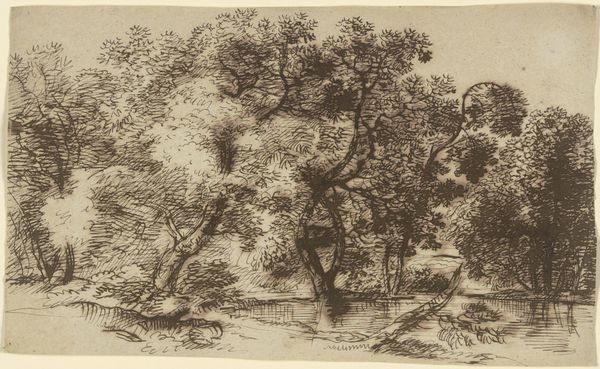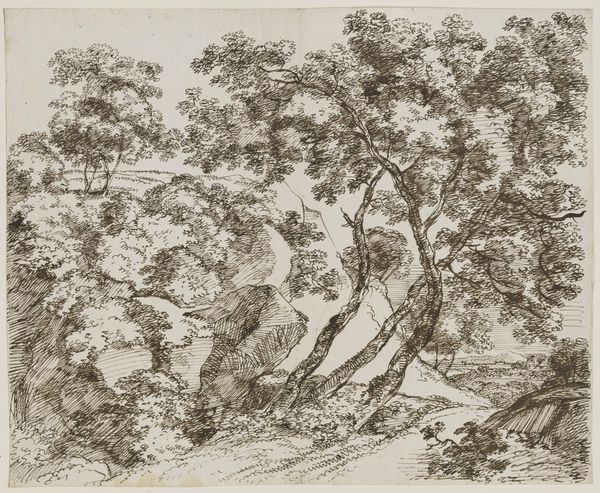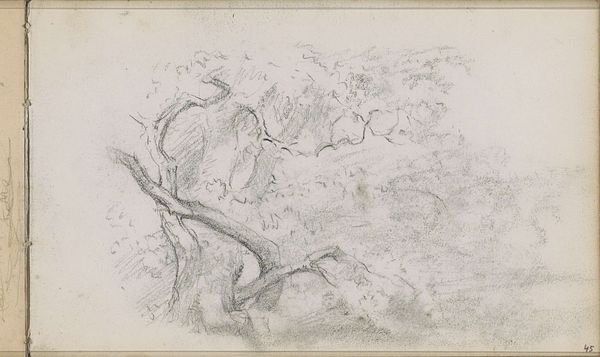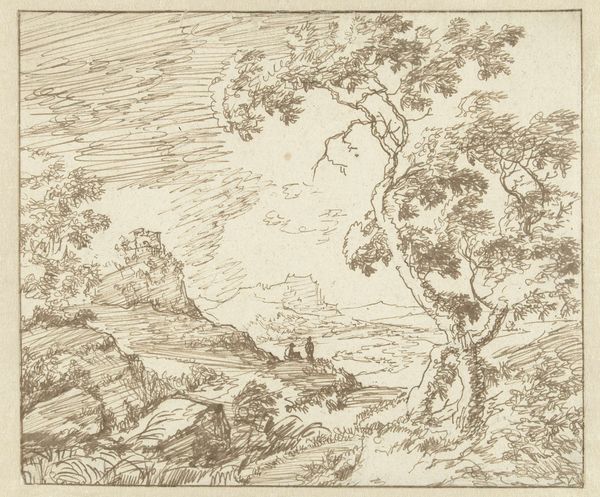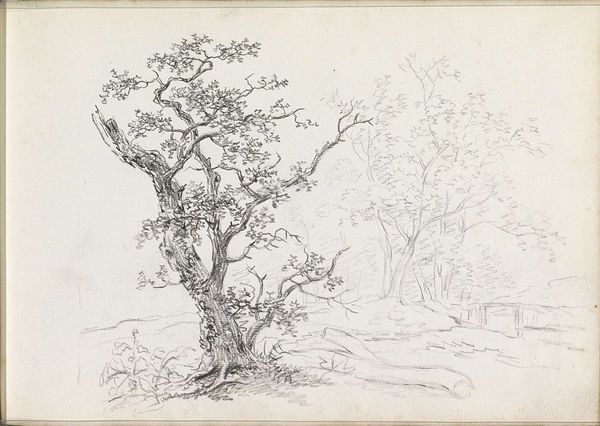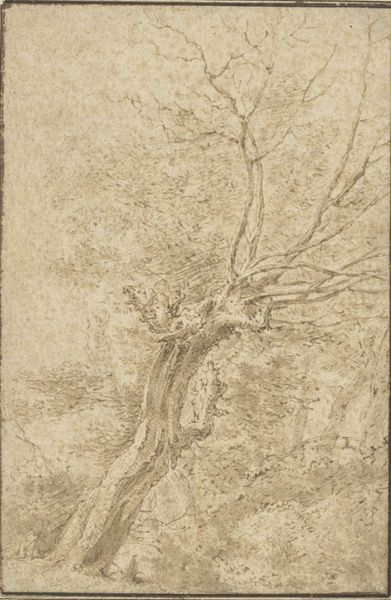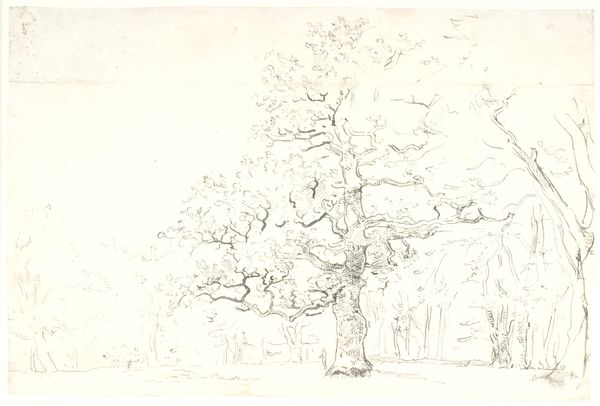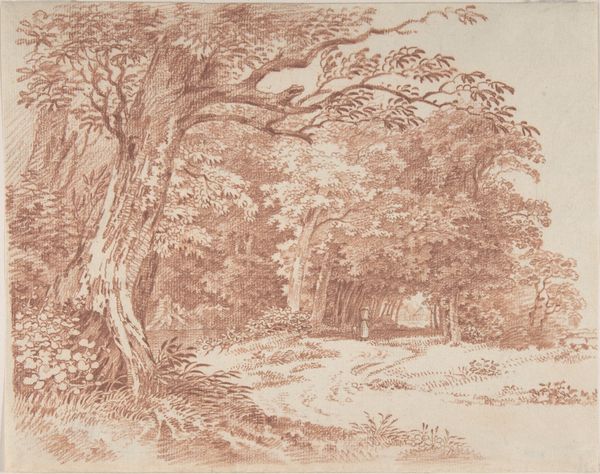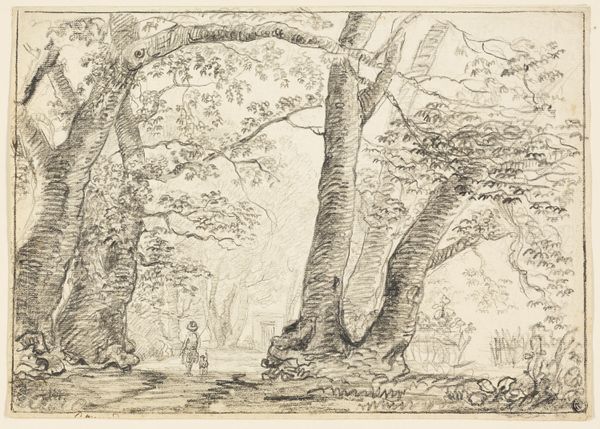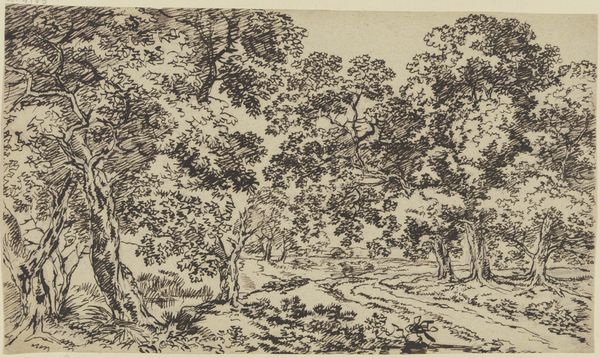
drawing, paper, ink, chalk
#
drawing
#
pen sketch
#
pencil sketch
#
landscape
#
etching
#
german-expressionism
#
paper
#
ink
#
german
#
pen-ink sketch
#
botanical drawing
#
chalk
#
line
#
pen work
#
watercolour illustration
Copyright: Public Domain
Curator: Rosy Lilienfeld's "Illustration of the Baalschem," created around 1930, is rendered in ink on paper. The artwork, currently held at the Städel Museum, captures a tranquil landscape, almost overgrown. Editor: My immediate impression is of something shrouded—a feeling of enclosure and muted quiet. It evokes that sense of nature reclaiming forgotten spaces, a return to something primeval. Curator: Considering the socio-political turbulence in Germany during the late Weimar Republic when it was made, I see it as a form of escapism, perhaps a retreat from societal chaos into the perceived stability and refuge offered by the natural world. Lilienfeld, a Jewish woman artist, might have sought solace, consciously or unconsciously, in imagining a world untouched by rising antisemitism and political instability. Editor: The choice of ink emphasizes line and contour, and for me it speaks volumes about the tradition of landscape drawing, specifically its symbolism. We're familiar with trees used to symbolize growth and resilience; but these forms twist and blend, implying the weight of time. This density feels deliberately symbolic of memory, both cultural and individual. Curator: That’s an astute point about memory, and I agree that these visual choices speak to broader themes. The deliberate rendering of the trees suggests that they are not simply objects to be observed but actively constructed symbols. For Lilienfeld, this imagery might reflect anxieties about displacement or cultural identity. It begs the question of who has access to these spaces, physically or conceptually. Editor: And how the memory of that space might endure... It definitely gives one pause when viewing a drawing from this period, as that visual record acts as a symbolic survival. Curator: Ultimately, this illustration provides us with an insight into how artists responded to times of upheaval, offering refuge within representation and using the image to voice concern during times when direct articulation wasn’t an option. Editor: And for me, I will walk away with the notion that Lilienfeld tapped into primal forces, both external, of the forest, and deeply internalized within her mind.
Comments
No comments
Be the first to comment and join the conversation on the ultimate creative platform.
